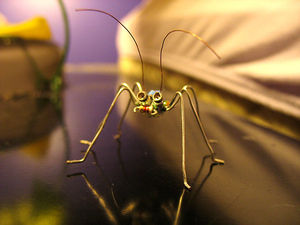Difference between revisions of "Assignment 6 Overview"
From Course Wiki
Juliesutton (Talk | contribs) (→Assignment Details) |
MAXINE JONAS (Talk | contribs) (→Assignment Details) |
||
| Line 14: | Line 14: | ||
# Part 2: [[Assignment 6, Part 2: Electronics bootcamp|Get in the lab and start building and measuring basic circuits]]; | # Part 2: [[Assignment 6, Part 2: Electronics bootcamp|Get in the lab and start building and measuring basic circuits]]; | ||
| − | {{Template:Assignment Turn In|message= all of your work (comprehensive list below) on Stellar in a single PDF file named <lastname><firstname>Assignment6.pdf.}} | + | {{Template:Assignment Turn In|message= Turn in all of your work (comprehensive list below) on Stellar in a single PDF file named <lastname><firstname>Assignment6.pdf.}} |
Turn in: | Turn in: | ||
Revision as of 18:40, 6 September 2017
During the next lab exercise on measuring DNA melting curves, you will build and debug several electronic circuits. This assignment will introduce you to the electronic components and test equipment you will use. This assignment requires an understanding of basic circuits. If you need to review circuit concepts, start with the Electronics Primer page. If you have a lot of experience with electronics, ask one of the instructors about doing a stimulating mini-project instead of this assignment.
Assignment Details
This assignment has three parts:
- Part 1: A few questions to answer before you start your lab work.;
- Part 2: Get in the lab and start building and measuring basic circuits;
| |
Turn in all of your work (comprehensive list below) on Stellar in a single PDF file named <lastname><firstname>Assignment6.pdf. |
Turn in:
- answers to the prelab questions
- answers to the following voltage divider questions:
- Record the values you selected for R1 and R2.
- Find the gain of the circuit, $ ^{V_{out}}/_{V_{in}} $
- Plot an I-V curve with I on the vertical axis and Vin on the horizontal axis, over the range 0 V < Vin < 15 V. (A hand-drawn plot is fine.)
- What is the maximum power dissipated in each resistor between 0 V < Vin < 15 V?
- the measured values of your resistors.
- your measured voltages Vout for Vin = 0, 2.5, 5, 10 and 15 V.
- your measured voltage across R2 in the presence of the 1kΩ resistor. By what percentage did the measurement change?
- Recorded values of the current through the circuit for Vin = 0, 2.5, 5, 10 and 15 V
- A plot of the measured I-V curve on the same set of axes as the calculated curve.
- your choice of capacitor and resistor values and corresponding Bode plot. Make sure to label the cutoff frequency.
- a plot of the measured values of $ \frac{V_{out}}{V_{in}} $ versus frequency on the same set of axes as your Bode plot.
- your Bode gain and phase plots and the corresponding circuit diagram for each of the four circuits A through D. Optional: In Matlab, use nlinfit to fit parameters of a transfer function for each circuit.
- a plot of the photodiode current vs. voltage for all light intensities on the same set of axes. Remember to convert the resistor voltage VR1 to current through the photodiode.
- an answer to: What operating condition of the photodiode is best for measuring light intensity?

